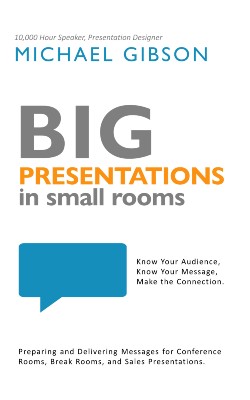DOES APPEARANCE MATTER?
It is time to talk about presentation visuals!
Knowing your audience, you have compiled and organized the content. You are doing great!
But…
What happens if you have brilliantly developed content delivered in ways that look bad?
Does it matter?
After all, the content is good.
You know the answer.
Appearance matters. Therefore, visuals matter.
When considering visuals, most presenters immediately focus on presentation software (PowerPoint, Keynote, Prezi, etc.). That is understandable. And incomplete.
The screen is not the only thing seen.
Let’s focus on three other presentation visuals. As you learn to respect and leverage the other visuals, your messages will gain influence.
THE ROOM IS A PRESENTATION VISUAL
As soon as I turned the lights on, I could see that there was work to be done. The tables were askew, the chairs were scattered. Used coffee cups littered the surfaces. As I got to work, I was thankful for the settings where rooms were kept clean. The idea that “this is not my job” never crossed my mind. I want what is best and I am willing to work for it.
The result is worth the effort.
If an audience arrives in a messy room, it hurts the presentation.
Even if:
It is not your fault.
It is not your job.
It is a major annoyance to clean up someone else’s mess.
It is worth your time to bring order to the chaos and provide an environment free of distractions.
Years ago, I lost track of the number of times I prepped a room for a presentation. I arrive early so that I can ensure that the place looks good. It is a visual that matters!

YOUR ATTIRE IS A PRESENTATION VISUAL
A young friend stopped by my table at Starbucks. He was wearing work clothes that were dotted with paint stains. It was during the Covid 19 pandemic, so he was wearing a facemask. The mask displayed the name of the company he works for—a paint company. The stains made sense!
But stains do not make sense in every setting.
Our family stopped eating at a local restaurant because the wait staff was wearing stained and crusty uniforms. Given the nature of the work, the stains were out of place. They revealed a concerning lack of cleanliness.
Every presentation comes with a set of expectations regarding dress. If you fail to meet those expectations, your appearance will be a distraction. If you are unsure of the expectations, ask questions. Invest effort in creating a helpful presentation visual with the way you dress.

YOUR MANNERISMS ARE PRESENTATION VISUALS
You are a presentation visual. People can see you. People will read you. And they will make decisions based on their observations even if those observations are incorrect. (We will talk more about misleading mannerisms in a future blog.)
This happens quickly!
Researchers Aleix Martinez; Shichuan Du describe the results of a study focusing on the speed of emotion recognition. My comments are in italics.
The results show that happiness is the fastest to be recognized (23-28ms) and that this value does not change as the image size decreases.
MS is a millisecond. So this is 23 to 28 one-thousandths of a second.
Neutral, disgust, and surprise form a second group requiring additional time (3 to 4 times longer than happiness) and with a minimal increase of processing time as the size of the percept [image] is reduced.
Still super fast!
Fear requires the same time as this second group, but its processing time increases dramatically as the percept decreases in size. Finally, sadness and anger constitute the group requiring the longest for recognition – about 10 times slower than happiness.
So… 230 to 280 thousandths of a second.
Even the most challenging emotions to decipher are read in less than a second. Your facial expressions are presentation visuals. The same is true of your posture and your gestures. Be aware of the messages you are sending!

PRESENTATION VISUALS ARE WORTH A THOUSAND WORDS
When an audience member enters the room, they are processing information in real-time. As they look around at the surroundings and observe you, they are instantly receiving input. They are receiving it in frames.
Some experts will tell you that the human eye can see between 30 and 60 frames per second. Some maintain that it’s not really possible for the human eye to perceive more than 60 frames per second (healthline).
If the old saying is true, and an image is worth a thousand words, your presentation’s textual content cannot compete with the overwhelming flood of information arriving through the visuals in the room.
Suppose you can channel the direction of that flood and create visuals that are conducive to listening. In that case, you will greatly increase the chance of success.
Want to know more? Keep reading the blog!
Want to know even more? Order Big Presentations in Small Rooms!
So…
What is an experience that taught you the importance of the room as a visual?
What is an experience that taught you the importance of dress as a visual?
What is an experience that taught you the importance of mannerisms visuals?




